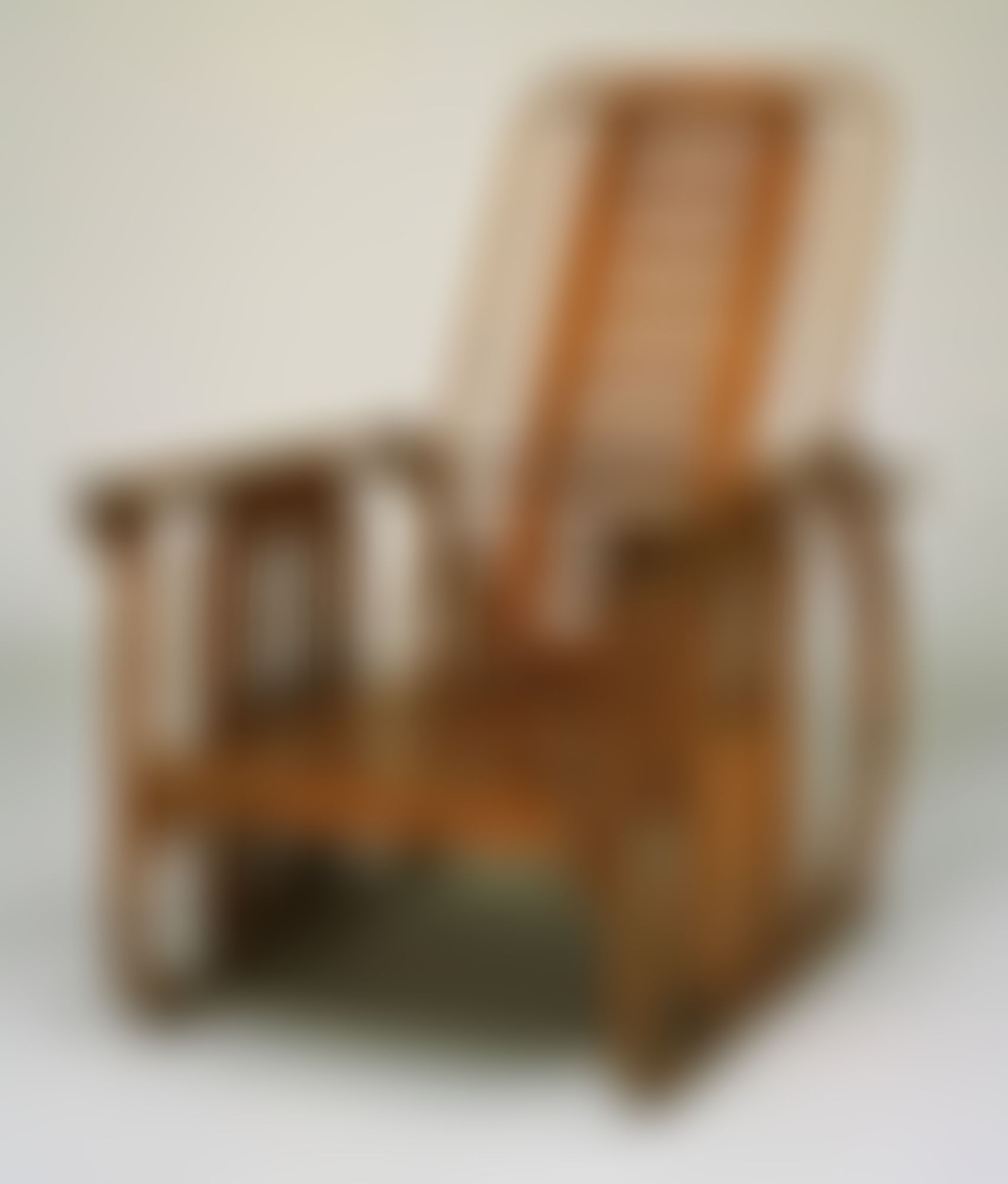
Sitzmaschine Chair with Adjustable Back (model 670)
The Sitzmaschine, or “machine for sitting,” was designed by Hoffmann for his Purkersdorf Sanatorium in Vienna. The sanatorium was one of the first important commissions given to the Wiener Werkstätte, a collaborative workshop founded in 1903 by Hoffmann and Koloman Moser and which espoused many of the British Arts and Crafts movement’s tenets of good design and high-quality craftsmanship. It represents one of Hoffmann’s earliest experiments in unifying a building and its furnishings as a total work of art.
The exposed structure and simplified forms of the Sitzmaschine make clear reference to the Morris chair, an adjustable-back Arts and Crafts chair pioneered by the English designer William Morris’s company in the late 1860s and widely imitated by other manufacturers in Europe and the United States. Hoffmann’s variant incorporates a fusion of decorative and structural elements typical of the Wiener Werkstätte style: the grid of squares piercing the rectangular back splat, the bentwood loops that form the armrests and legs, and the rows of knobs for adjusting the back. At the same time, the name Sitzmaschine and the chair’s rational simplification of forms and high finish emphasize the design’s allegorical celebration of the machine. J. & J. Kohn manufactured and sold this chair in a number of versions, most of which had cushions on the seat and back, until at least 1916. The Kohn firm produced many designs by Hoffmann, forming one of the first successful alliances between a designer and industry in Vienna.
Credit: Gift of Jo Carole and Ronald S. Lauder
c. 1905
Bent beechwood and sycamore panels
110.5 x 71.8 x 81.3 cm
361.1993
Image and text © MoMA - Museum of Modern Art, New York, 2019
Where you'll find this

The Museum of Modern Art
Permanent collection




